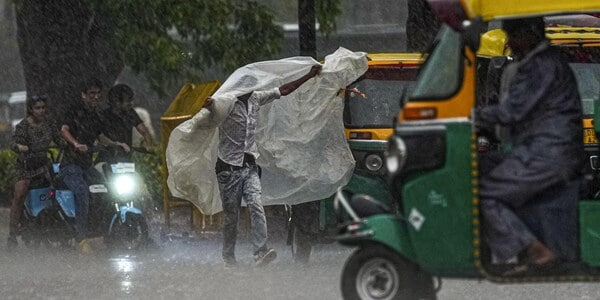India is likely to experience above-normal cumulative rainfall in the 2024 monsoon season with La Nina conditions likely to set in by August-September, the IMD has said on Monday
 KRC TIMES National Bureau
KRC TIMES National Bureau

India is likely to experience above-normal cumulative rainfall in the 2024 monsoon season with La Nina conditions likely to set in by August-September, the IMD has said on Monday.
However, normal cumulative rainfall does not guarantee uniform temporal and spatial distribution of rain across the country, with climate change further increasing the variability of the rain-bearing system.
Climate scientists say the number of rainy days is declining while heavy rain events (more rain over a short period) are increasing, leading to frequent droughts and floods.
Based on data between 1951-2023, India experienced above-normal rainfall in the monsoon season on nine occasions when La Nina followed an El Nino event, India Meteorological Department chief Mrutyunjay Mohapatra told a press conference here.
India is likely to see above-normal rainfall in the four-month monsoon season (June to September) with cumulative rainfall rainfall estimated at 106 percent of the long-period average (87 cm), he said.
Positive Indian Ocean Dipole conditions are predicted during the monsoon season. Also, the snow cover in the Northern Hemisphere is low. These conditions are favourable for the Indian southwest monsoon, he said.
Moderate El Nino conditions are prevailing at present. It is predicted to turn neutral by the time monsoon season commences. Thereafter, models suggest, La Lina conditions may set in by August-September, Mohapatra said.
India received “below-average” cumulative rainfall — 820 mm compared to the long-period average of 868.6 mm — in 2023, an El Nino year. Before 2023, India recorded “normal” and “above-normal” rainfall in the monsoon season for four years in a row.
El Nino conditions — periodic warming of surface waters in the central Pacific Ocean — are associated with weaker monsoon winds and drier conditions in India.
Three large-scale climatic phenomena are considered for forecasting monsoon season rainfall.
The first is El Nino, the second is the Indian Ocean Dipole (IOD), which occurs due to differential warming of the western and eastern sides of the equatorial Indian Ocean, and the third is the snow cover over the northern Himalayas and the Eurasian landmass, which also has an impact on the Indian monsoon through the differential heating of the landmass.
The southwest monsoon delivers about 70 percent of India’s annual rainfall, which is critical for the agriculture sector. Agriculture accounts for about 14 percent of the country’s GDP.






